7 Top Ecommerce Tools to Scale Your Business
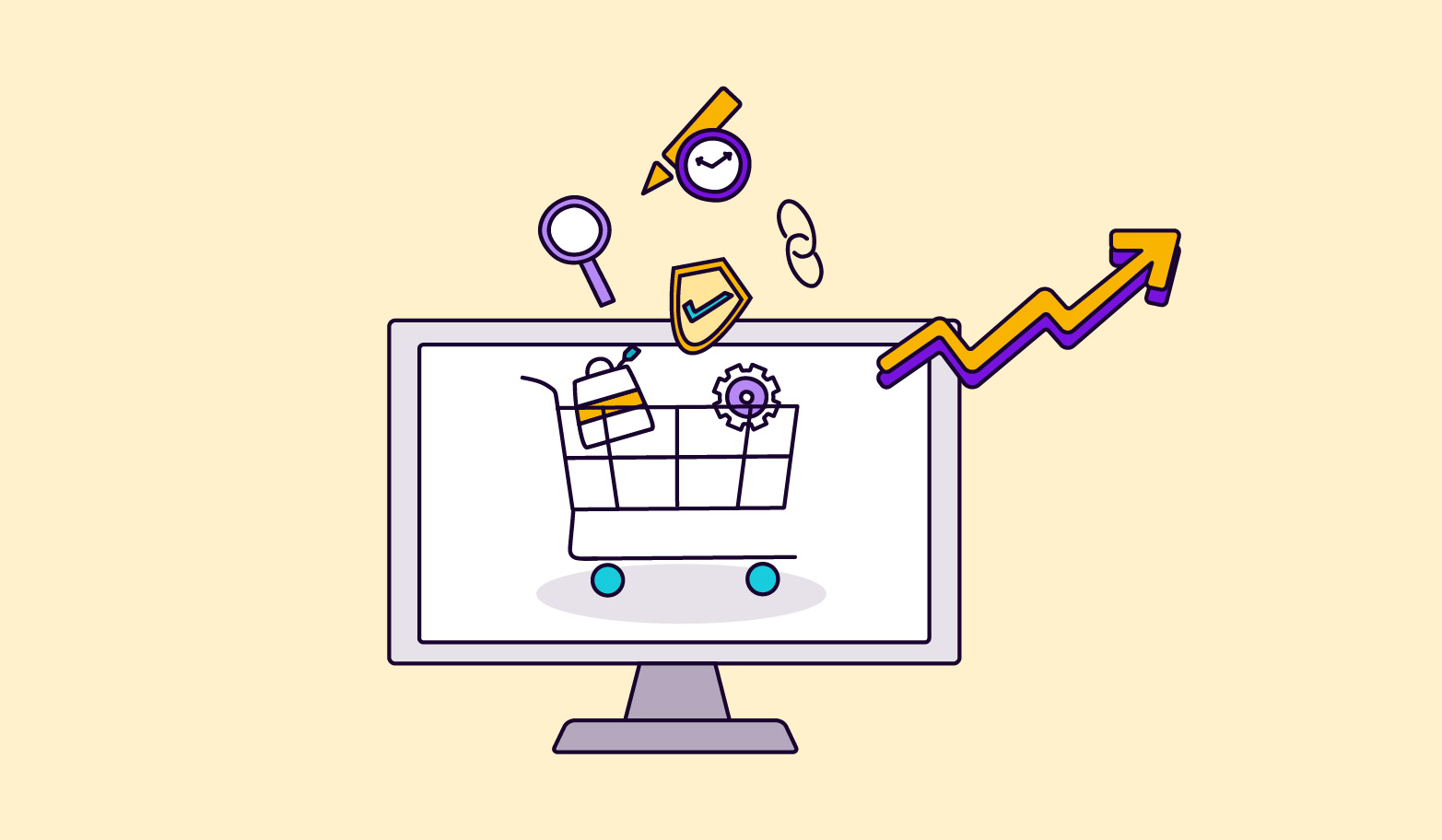
Keep the good stuff coming
Subscribe to our blog newsletter and get monthly content that helps you manage product data smarter.
No spam. Just real value.
The growth of ecommerce is undeniable, with an ever-increasing amount of sales happening each year (just in 2022, we reached $5.7 trillion in global sales with a 10% increase from last year’s sales). This is great news for ecommerce businesses—but the most important question here is, is your business growing too?
Whether you’ve set the goal of growing your business or you’ve already started, you’ll want to make sure you have all the right tools that help you reach your maximum growth potential. Because finding the right tech stack doesn’t matter if those tools can’t help you scale your business—and it goes without saying that relying solely on spreadsheets isn’t the way to go (unless you like unnecessary work and burnout).
To help set you up for success, I’ll go through the seven ecommerce tools you’ll need, why you need them, and the three most popular (and scalable) options for each tool.
7 ecommerce tools you’ll need to scale your business
In this list, I’ve included the essential tools you’ll need. This list isn’t exhaustive, but it touches on the most important tools you’ll need to reach your ecommerce goals. Keep in mind that these tools aren’t listed by importance but rather by the order in which you’d use them in your workflow.
- Enterprise Resource Planning (ERP)
- Product Information Management (PIM) with DAM capabilities
- Content Management System (CMS)
- Feed Management System
- Payment Processing
- Order & Shipping Management
- Analytics
Note: Always remember to go for a free trial or demo before committing to any ecommerce tool. That way, you can make sure that the tool is a perfect fit for your business.
1. Enterprise Planning Resource (ERP)
ERP is a system that helps you manage data related to day-to-day business operations. Imagine a tool that can: manage your sales, keep track of inventory, handle your finances, and even keep an eye on your customer relationships—that's ERP for you.
Note: There’s a misconception that ERP is the same as PIM, but it’s not (in case you were wondering, here’s an article about PIM vs ERP that explains why).
Why you need ERP
- Unified operations data: An ERP system puts all your business data in one place. Say goodbye to toggling between different apps to check your inventory or finances.
- Real-time insights: ERP systems update data in real time. This means if a product is about to go out of stock or if a customer has just placed a large order, you'll know instantly.
- Automated workflows: An ERP system can automate repetitive tasks. Whether it's invoicing, payroll, or order processing, automation frees up your time so you can focus on more important aspects like strategy and growth.
Top ERP picks
NetSuite
This ERP is ideal for mid-sized businesses. NetSuite offers robust features with a focus on ecommerce. It's cloud-based, so you can access your data anytime, anywhere. Plus, it has some analytics tools to help you make business decisions.
SAP Business One
This ERP solution is comprehensive and customizable—meaning you can tailor it to fit your exact needs. It might be a bit pricey for some, but if you're serious about scaling, SAP Business One is worth every penny.
Odoo
If you're running a smaller ecommerce store and need something budget-friendly, check out Odoo. This open-source ERP solution offers a lot of customization options. Plus, you can start with just one app and add more as you grow.
2. Product Information Management (PIM) with Digital Asset Management (DAM)
PIM software (with DAM capabilities) is a central source of truth where you can manage, optimize, and distribute all your product information and media that you need to sell your products.
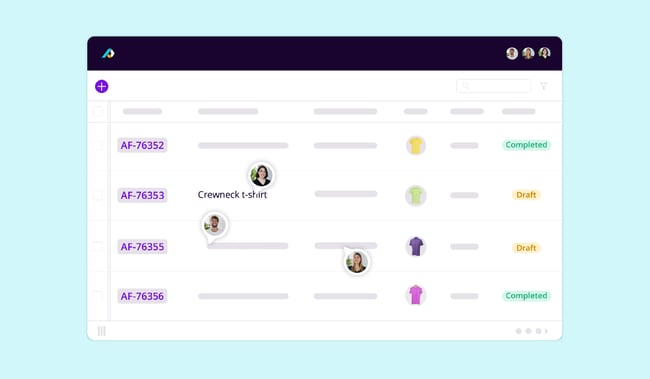
Why you need PIM
- Seamless team collaboration: PIM makes working with your team (from marketing and ecommerce managers to external suppliers and partners) easier than ever. All your information is stored in one place and up-to-date, so you never have to worry about anyone getting the wrong version of your spreadsheet.
- Time-saver: PIM solutions let you cut out manual work when updating your product information and media across all your channels—no more copying and pasting for hours on end. And if you’re lucky, your PIM might even have bulk editing.
- Consistent channels: You might be surprised how often channels have mismatched product prices or descriptions. PIM helps you make sure you have up-to-date (and error-free) product information on all your channels.
Top PIM picks
Plytix
Plytix is a next-generation PIM (with DAM and feed management capabilities) specially made for small to medium-sized businesses who want to compete with the ecommerce giants. Plytix stands out from the rest with its affordable pricing, easy-to-use interface, and unbeatable customer service.
Akeneo
Akeneo is unique in that it provides open-source software, which allows retailers or those with access to development resources to customize the PIM to their exact specifications.
Salsify
If you're leaning towards the enterprise side of things, then Salsify might be an option worth considering. It combines PIM and DAM functionalities to help you with the customer experience.
3. Content Management System (CMS)
CMS helps you manage and publish content for your website (or webshop). This is your online storefront where you can sell directly to customers.

Source
Why you need an ecommerce CMS
- Your 24/7 salesperson: Unlike a brick-and-mortar store, your online shop never sleeps. This makes it easy for your customers to access your products whenever (and wherever) works best for them.
- Customized branding: While marketplaces (like Amazon and eBay) can give you greater global reach, having your own webshop (through an ecommerce CMS), really allows you to show the personality of your brand. Not only do you get to control the design of the page, but also the way you speak and interact with your online customers.
- A helping hand with marketing: Many ecommerce platforms come with SEO features, social media integrations, and even email marketing tools. It's like having a marketing toolbox available to you whenever you need it.
Top ecommerce CMS picks
Shopify
Shopify is growing in popularity for a reason—it’s friendly, reliable, and everyone loves it. Shopify offers an easy-to-use interface, a variety of extensions, and top-notch customer support. This ecommerce platform is great for businesses of all sizes.
BigCommerce
If you’re all about customization but don’t want to get tangled in the complexities of coding, BigCommerce is the one for you. It offers a range of built-in features and allows for a lot of flexibility without the need for extra coding skills.
WooCommerce
WooCommerce is the plug-and-play ecommerce solution for you—especially if you’re already running a WordPress site. It integrates seamlessly with WordPress, and it's customizable—making it ideal for small to medium-sized businesses.
4. Feed Management System (FMS)
FMS manages your product data feeds, so you can get your products to your sales channels. Some PIM systems have feed management capabilities, but if you want the best of both worlds, check out how PIM and FMS work together.
Why you need a Feed Management System
- Multichannel feeds: If you're selling on Amazon, eBay, Google Shopping, and who knows where else, a Feed Management System helps you coordinate your product listings across multiple channels.
- Rule-based automation: A good Feed Management System allows you to set specific rules for updating your product listings. This can include automatic price adjustments, out-of-stock notifications, or updating seasonal promotions, making the system adaptable to your needs.
- Customizable templates: Feed Management Systems usually provide templates that are customizable to the requirements of each specific sales channel. This allows for more efficiency when creating or updating product listings.
Top Feed Management System picks
Channable
Highly intuitive and known for its seamless integration capabilities, Channable makes it super easy to manage your product feeds while also offering powerful rule-based optimizations.
Channel Advisor
If you’re serious about selling on multiple platforms and need some advanced features like algorithmic repricing, ChannelAdvisor would be a great option for you.
Feedonomics
If you’re looking for a tool that offers a blend of automation and customization, Feedonomics could be your match. It’s particularly good for larger inventories and offers robust reporting features.
5. Payment Processing
Payment Processing is the software that accepts credit card payments on your website. Make sure to find software that makes your customers’ payment process safe and easy so that you give them the best shopping experience.
Why you need Payment Processing
- Frictionless checkout: When the payment process starts to feel like a hassle, customers are quick to abandon their cart. A smooth payment processor eliminates that friction, making it easier for customers to buy the products they love.
- Security: With cybercrime on the rise, a secure payment processor is non-negotiable. It protects your customers' data and saves you from security breaches.
- Multi-currency and payment options: With a good payment processor, you can accept multiple currencies and offer various payment methods, from credit cards to digital wallets—giving you the chance to have customers from all over the world.
Top Payment Processing picks
Stripe
Stripe is renowned for its flexibility and developer-friendly environment. It's great for both startups and established businesses looking for a customizable solution.
Square
If you sell at both an online store and a physical retail location, Square’s unified system lets you manage all payments through one dashboard, whether they’re online or in-person.
Paypal
PayPal offers the advantage of a well-known brand that people feel secure using. It's easy to integrate, and its One Touch feature makes repeat shopping a breeze.
6. Order & Shipping Management
Order and Shipping Management software helps you manage and ship out the orders your customers place.
Note: Some of these features might overlap with your ERP, so make sure to look for a solution that makes sense for your tech stack.
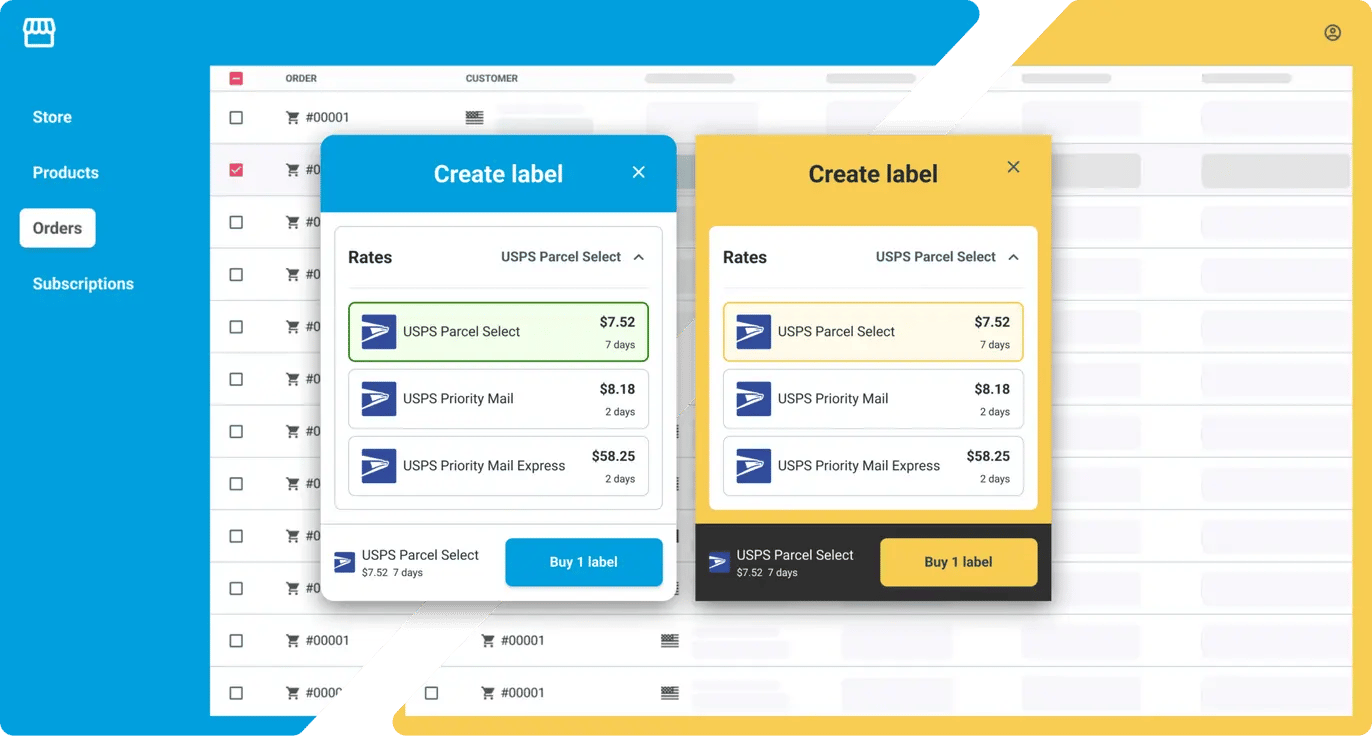
Source
Why you need Order & Shipping Management
- Automated orders: Managing orders manually is time-consuming, and no one wants to do it. Order & Shipping Management software automates this process, making it as smooth as possible.
- Inventory Accuracy: Ever tried to sell a product that was actually out of stock? With Order & Shipping software, your inventory syncs in real-time, so you're never in have to scramble to fix an out-of-stock order again.
- Cost Efficiency: This software helps you compare shipping rates and options, so you can choose the most cost-effective and timely method. Plus, you’ll make your customers happy when their products arrive on time.
Top Order & Shipping Management picks
ShipStation
ShipStation is known for being fast and efficient. It supports all major carriers and provides tools like batch processing and customizable labels. Ideal if you're a small to mid-size retailer.
Zentail
If you're a multi-channel seller, you’ll want to check this option out. Zentail not only manages your orders but also your listings, inventory, and even your analytics. This is a popular choice for many Amazon sellers.
Shippo
It's got a super user-friendly interface and offers deep discounts on shipping rates. It's a great choice if you're just starting out in ecommerce.
7. Analytics
Analytics software allows you to track, analyze, and interpret the ecommerce metrics you use to measure your success. Most ecommerce CMS systems will have this data, but you’ll want to find a solution that gives you a full view of everything you need to track.
Why you need Analytics software
- Know your customers: Analytics software can help you understand your customers even more than before. Dive into customer behaviors and preferences so that you can better tailor your marketing and sales efforts.
- ROI tracking: Analytics lets you keep tabs on your ROI, so you can double down on strategies that are actually making sales—not losing them.
- Inventory insights: This software helps you figure out what your customers love, and what products you should stop selling. It helps you understand seasonal patterns and when you’ll need to stock up more for next time.
Top Analytics software picks
Google Analytics 4
You can use Google Analytics 4 to better understand your users and improve the performance of their content, products, and more—all for free.
Woopra
Woopra is a Customer Journey Analytics solution that helps you analyze and engage your customers throughout the entire customer lifecycle. Woopra lets you see individual customer interactions across multiple channels.
Glew
Glew’s 70+ integrations let you see all your data in one place with automated reports and visualizations for informed decision-making.
Scale your business with the right tools in hand
Scaling your business can create a lot of pressure, and depending on how you set yourself up, that pressure can make or break your business. Equipping you and your team with the right tools will be crucial as your business grows.
This list will help guide you in making sure you have everything you need to succeed. Don’t forget to get a free trial or demo of the tool before you fully commit. And, of course, you’ll need to make sure the software supports the amount of business you’ll be doing. Check to see what the limitations are of each platform to guarantee it won’t stunt your business’ growth. Once you do that, you’ll be all set to get your online business to reach its full potential.
Want an in-depth look at how you can create a tech stack for your ecommerce business? Download this free ecommerce technology guide today!
Frequently Asked Questions
An ecommerce tool is specialized software designed to assist businesses in managing, operating, and scaling their online sales activities. These tools range from handling product information to processing payments and shipments.
Here are some ecommerce tools we’d recommend for businesses just starting up:
- Plytix: The most powerful and affordable PIM on the market
- Shopify: All-in-one ecommerce platform with a low entry price
- Square: A free point-of-sale (POS) system where you only need to pay transaction fees
- Shippo: A shipping management platform with an inexpensive pay-as-you-go plan
Ecommerce tools improve various aspects of your business, from product management to payment processing. They reduce manual work, minimize errors, and provide analytics for better decision-making.
Anyone involved in online selling—be it a solo entrepreneur, a small to medium-sized business, or an enterprise—uses ecommerce tools to automate workflows and improve profitability.

Bergen Palmer
Bergen Palmer is a content marketer at Plytix, where she writes all about product information and ecommerce. With a background in ecommerce SaaS and content strategy, she focuses on creating clear, trustworthy content that helps brands work better with their product data.

What if your product data actually worked for you?
We’ll show you how Plytix helps you stop fixing data—and start using it.
Related posts
Keep the good stuff coming
Subscribe to our blog newsletter and get monthly content that helps you manage product data smarter.
No spam. Just real value.
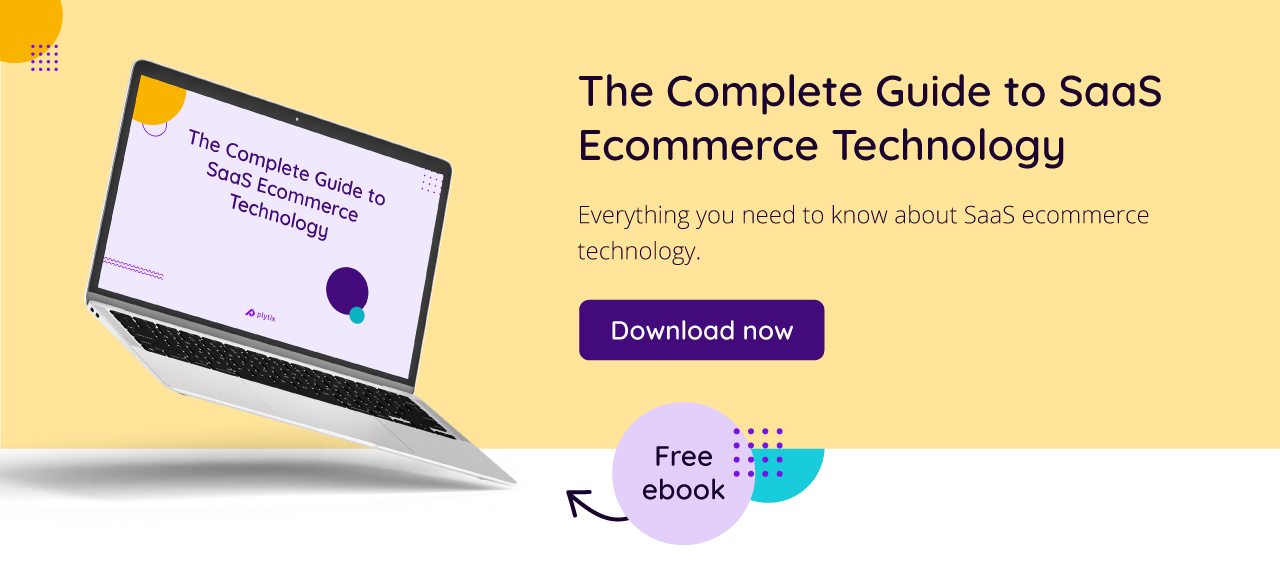
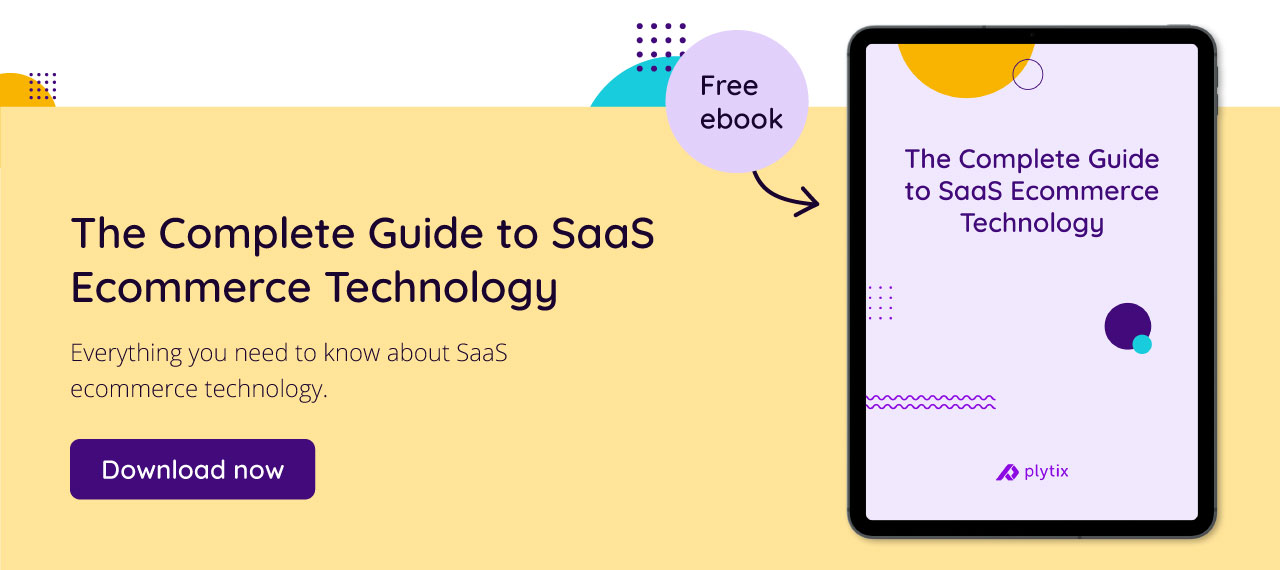




Think others should see this?
Go ahead and share it.